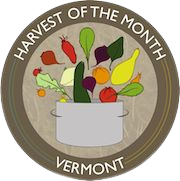Berries
Berries have long been cherished as both food and medicine by the Abenaki people. Native to the woodlands, riverbanks, and meadows of the Northeast, berries like strawberries, blueberries, and raspberries have been gathered for generations throughout the growing season. Among them, the first ripe strawberry, known as kō'kwô'm, holds special significance—marking the arrival of summer and the beginning of berry harvests.
Berries are a seasonal favorite—eaten fresh, baked into muffins and pies, blended into smoothies, or easily preserved to be enjoyed throughout the year. Aside from their phenomenal flavor, their beautifully bright colors also serve as an indicator to their nutritional benefits. Berries offer a vibrant and accessible way to explore local food, seasonal eating, and the cultural history of our region.
Downloads (PDF):
Slide show (PDF):
Reading List:
» Berries, Nuts and Seeds, by Diane Burns
» Blueberries For Sal, by Robert McCloskey
» Jamberry, by Bruce Degen
» Raspberries!, by Jay O’Callahan
» The Berry Book, by Gail Gibbons
» The Blackberry Patch, by Gine D’Andrea
Activities:
Try cooking “Sticks and Berries”
Pick your own berries: find locations across Vermont.
Grow your own: Ultimate Guide to Growing the Best Berries
Liberation Story:
In New England, every summer, thousands of people travel to harvest wild blueberries from the barrens where they have grown for centuries. The five nations of the Wabanaki peoples–the Mi’kmaq, Maliseet, Passamaquoddy, Penobscot, and Abenaki–whose ancestral lands stretch between Canada, Mainen and Vermont, have encouraged wild blueberry growth for generations stretching from pre-European contact to today. For many, coming back to Maine every summer for the blueberry harvest connects them to their land and heritage. Large harvests occur on land that Massachusetts seized from the nations, before being bought back by the Wabanaki nations and being used for Indigenous blueberry cultivation. Connecting back to the land and traditional ways of harvesting blueberries is one method of combating the erasure of Indigenous cultures through laws and boarding schools throughout US and Canadian histories.
Read more about how blueberries are at the center of a renewal of threatened agricultural practices by the Passamaquoddy Tribe.






